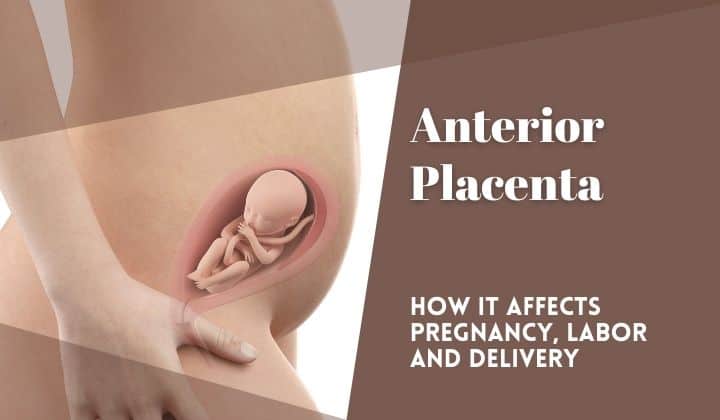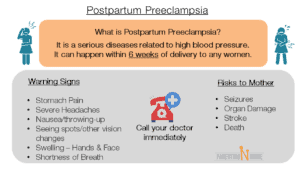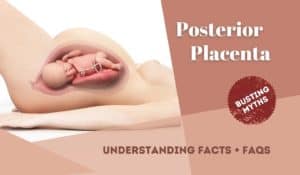Medically Reviewed by: Dr. Veena Shinde (M.D, D.G.O, PG – Assisted Reproductive Technology (ART) from Warick, UK) Mumbai, India
-
Author: Palak Thakkar
- >> Post Created: November 27, 2021
- >> Last Updated: May 2, 2024

Placenta Anterior - Table of Contents
Hey would-be-mothers! We know there are a million things on your mind, and one of those things could be understanding your placenta position. All mothers-to-be, new or experienced, need to be aware of their placenta health and placenta positions, as your placenta plays a vital role in your pregnancy and delivery.
Let me take the load off your chest now… If the doctor tells you that you have an Placenta in front or Placenta Anterior, you have no reason to worry.
However, it is always good to be aware about certain facts about having an anterior placenta position, because it can influence your pregnancy journey, labor and delivery of your baby.
What is Anterior Placenta?
Unlike Posterior Placenta, an Anterior Placenta (Placenta Anterior), is when the placenta is located in front inside of the uterus (placenta in front).
A few pregnancy experiences might be different with your placenta in front; you may take longer to feel fetal movements, there might be some difficulty in detecting the baby’s heartbeat, etc.
But it should not raise any major concerns, as it is only because you have the placenta in front inner side of your uterus, which acts like a cushion in between your baby and your skin.
How is Anterior Placenta position different from other placenta positions?
Placenta Anterior may not be the most ideal position for pregnancy; nevertheless, this does not mean that there is a need to worry about the pregnancy or the delivery of the baby.
Yes, with the placenta in front of the uterus, you may witness a slightly different pregnancy journey as compared to other placenta positions.
You can expect the following while having an placenta in front – placenta anterior:
- Delayed fetal movements
- Difficulty in monitoring the baby’s movements in the womb
- Monitoring the baby’s kick counts
- Lack of ease in prenatal examinations
Delayed Fetal Movements
Generally, with other placenta positions, expectant mothers may start feeling their baby’s kick in the 18th week, but it can also get delayed till to the 24th week.
However, for a mother-to-be with placenta anterior, it will take longer to feel the baby’s kick because the placenta is in front of the uterus, which acts like a cushion between the baby and the outer part of the belly.
It is only by the third trimester, when the baby has grown enough to make more visible movements, that pregnant women with placenta anterior start feeling the baby’s movements.
Difficulty in monitoring the baby’s movements in the womb
The baby’s first kick is a major milestone for a mom-to-be. Your baby is alive and kicking and that feeling is amazing! To monitor the baby’s movements in the womb, along with kick counts, rolls, bumps, other movements are also counted.
It is not only joyful for the would-be parents, but it is also a factor through which the doctor gets confirmation that the baby is healthy.
However, with the placenta in front, this experience too can be delayed for a while. Doctors still suggest avoiding unnecessary worry about tracking the baby’s movement with placenta anterior, as it can only cause stress to the expectant mother.
By the beginning of the third trimester, the baby will have a more predictable activity pattern that will help you track their movements on a daily basis.
Here are some tips to feel your baby’s movements in a better way:
- Observe and note your baby’s usual pattern of sleep and awake time. Also determine the usual active periods in the day
- Focus on feeling your baby’s movements on the sides of the belly and down low in the pelvis
- Eating a snack or consuming some juice can act as an energy booster for the baby and make him/her more active.
- Lying down or sitting comfortably
Monitoring the baby’s kick counts
To monitor the baby’s movements and kicks in the womb, observe how much time it takes to feel 10 movements of the baby. In a typical case, there should be at least 10 movements in a span of two hours.
However, this has to be checked at a time when the baby moves the most during the day. In my case for my first pregnancy – my daughter used to be super active after my meals and just as when I used to go to take a nap.
However while having the placenta in front, as mentioned before you may start to feel your child’s kicks a little later. Don’t be scared. Discuss it with your doctor and mid wife and they would give you tips as to how to observe your child’s kicks.
Towards the end of the third trimester these movements play an important role in avoiding certain issues.
If you do not feel any movement or flutter at any other time of the day, it could also mean that the baby is asleep. It is also vital to know that you may not feel the movements as much if you are physically active, which may be distracting for you and may also put the baby to sleep.
Read this next
Difficulty during prenatal examinations
The placenta position decides how easy or difficult it may get to make observations through prenatal tests. Do not panic or stress if some of the tests take longer or require more effort on the doctor’s part; it is a challenge that comes with anterior placenta position.
An amniocentesis is a prenatal test that studies the amniotic fluid of the expectant mother. To acquire a sample for the test, the doctor pulls out some amniotic fluid through a needle in the abdomen. However, if you have placenta in front of the uterus like a cushion between the baby and uterus wall, i.e. placenta anterior – then it can act as a barrier when it comes to collecting the sample.
It might get difficult for the mother as well, but there isn’t any need to worry, as your doctor will have other tactics to work around this problem.
In another usual prenatal exam, doctors find and observe the baby’s heartbeat with the help of a fetal Doppler. However, with placenta in front, it can take longer than usual to track the heartbeat as the baby is behind the placenta.
One of the typical ways for doctors and midwives to feel the baby’s position and size through your abdomen is by using their hands. However, with the placenta in front, which acts like a barrier, can make this task a bit difficult. This may require more time and effort from the medical professionals, but they can still feel the baby’s position and size behind the placenta anterior.
Anterior placenta risks & Complications
An anterior placenta does not pose any more risk of complication in pregnancy and delivery of the baby than any other placenta position.
However, research has shown that the placenta anterior can be responsible for some of the following risks and associated complications.
Anterior low-lying placenta/ Anterior placenta previa
This is the placenta position wherein the placenta is in the front of the uterus, but as the baby’s growth progresses, it expands low towards the cervix or the opening of the womb and partially or fully covers it. This can then give rise to a pregnancy complication called placenta previa – in this case anterior placenta previa.
This can cause the mother to bleed and make the situation tense during delivery. In such a case, a C-section is the only way to deliver the baby safely.
On the bright side – Placenta previa is a comparatively rare pregnancy complication, occurring in only 1 of 200 pregnancies. Further, in 90% of pregnancies that have low-lying placenta/ placenta previa, the placenta moves upward and away from the cervix before the delivery naturally as the baby grows and placenta expands.
Labor and anterior placenta delivery
Generally, placenta anterior does not affect the labor and delivery at all. If you do not have a low-lying anterior placenta and there are no other major issues during your pregnancy, you can even have a vaginal delivery.
Nonetheless, in case of a low-lying anterior placenta, the usual spot where the doctor makes an incision for a C-section could be covered by the placenta. In such a situation, medical professionals perform an ultrasound test to determine the safest place for the incision to deliver the baby.
Some research says that expectant mothers who have placenta anterior may face a higher risk of back labor (In this, during the delivery, the baby’s head leans on the mother’s spine and tailbone), which can cause immense back pain during the delivery.
Some data also suggests that there is a higher chance of the following risks/complications in women with anterior placenta. Here’s listing some common complications and issues.
Other complications while having placenta in front are:
Lower back pain
Anterior placenta may cause lower back pain in pregnant women. A bad back ache is common in pregnancy, be it any placenta position, but with placenta anterior the chances are slightly higher for the same.
Some simple exercises which your doctor or midwife may suggest can help the situation, but in some cases, the doctor might advise complete bed rest for some time.
Difficulty in screening and diagnostic tests
When the placenta is in front, it obviously makes some tests more difficult. A prenatal test called amniocentesis (recommended only if sequential screening test results indicate that the baby has an increased risk of some conditions like Down’s syndrome) can become a challenge for the medical professionals in case of having the placenta in front.
In amniocentesis, a long, thin needle is inserted to reach the amniotic sac to collect a sample of cells to test for certain health conditions. However, the placenta anterior acts as an obstacle for this. Doctors then use ultrasound scanner to avoid the placenta and guide the needle to the right place, which reduces the risk of injury drastically.
It is vital to note that there is a small risk of miscarriage after an amniocentesis and this is irrespective of your placenta position; an anterior placenta or having your placenta in front has nothing to do with this risk.
Baby’s position in the womb
Placenta anterior increases the chances of the baby being positioned in the back-to-back or occiput posterior position. This is the position wherein the baby’s head is down towards the cervix, but the back is against the mother’s spine.
There are good chances that by the time you go into labor the baby turns and places itself in the optimal position – head first and face toward the mother’s spine. With this a normal vaginal delivery is possible.
But in case the baby continuous to stay in the back-to-back position, then there are increased chances of:
- a longer labor
- a more painful labor
- a caesarean section delivery
- assisted birth
With the placenta in front, the chances of the following also go up:
- Gestational diabetes
- Hypertension induced by pregnancy
- Intrauterine growth restriction
- Induction of labor
- Placental abruption
- Intrauterine fetal death
- Post-postpartum complications
If you have any concerns regarding having placenta in front, it is always advisable to consult your doctor.
Know when to call your doctor
With anterior placenta, a mom-to-be has to pay keen attention to her baby’s movements. And in the following cases during pregnancy, you need to contact your doctor right away:
- The baby’s movements are significantly fewer as compared to earlier
- You do not feel your baby’s movements by 24 weeks of pregnancy
- You don’t feel your baby move after a two-hour period of concentrating on feeling kicks
- You develop intense back pain
- You have pain and tightening in the stomach
- You have vaginal bleeding (even a little should be reported)
- You think you are having contractions
- Fast or constant contractions
- Firmness in the uterus
Common FAQs on anterior placenta
Q. How to determine anterior placenta position?
The placenta position can be determined during the 18th to 20th week of pregnancy, when it is time for your second routine ultrasound scan.
Q. How is anterior placenta delivered?
In most cases, babies delivered with anterior placenta are done so without any complications. If the delivery is vaginal, then in the third stage of labor, the placenta is delivered as well.
Placenta delivery takes place within 30 mins of the baby’s delivery, wherein with the uterus continuously contracting, the placenta separates itself from the uterus and expel. You may be asked to push for this as well.
In case of a retained placenta, where the placenta is not able to separate and deliver itself from the uterus within 30 minutes, then additional medical assistance is required.
After it is delivered, the placenta is studied to ensure that no remnants are left in the uterus as that can cause bleeding and infection.
In a nutshell
The placenta position determined initially is likely to change as the pregnancy advances and it could move upward or downward within the uterus.
An anterior placenta, is when the placenta develops in front of the uterine wall within the uterus and is a completely normal and common position of placenta.
However, as mentioned in the article, your pregnancy experience might differ because of having placenta anterior. The anterior placenta position may cause you to feel the baby’s movements a little later than usual, but it’s normal as the placenta is in front and acts as a cushion between your child and your tummy from out.
But remember, with the placenta in front, you are safe to have healthy pregnancy and delivery.
At the end, consult your doctor in case of any concerns and ensure regular prenatal care to avoid any complications in the future.
Happy Pregnancy!









Thanks you Zoe.
I am glad you liked our blog.
Thanks Josie.